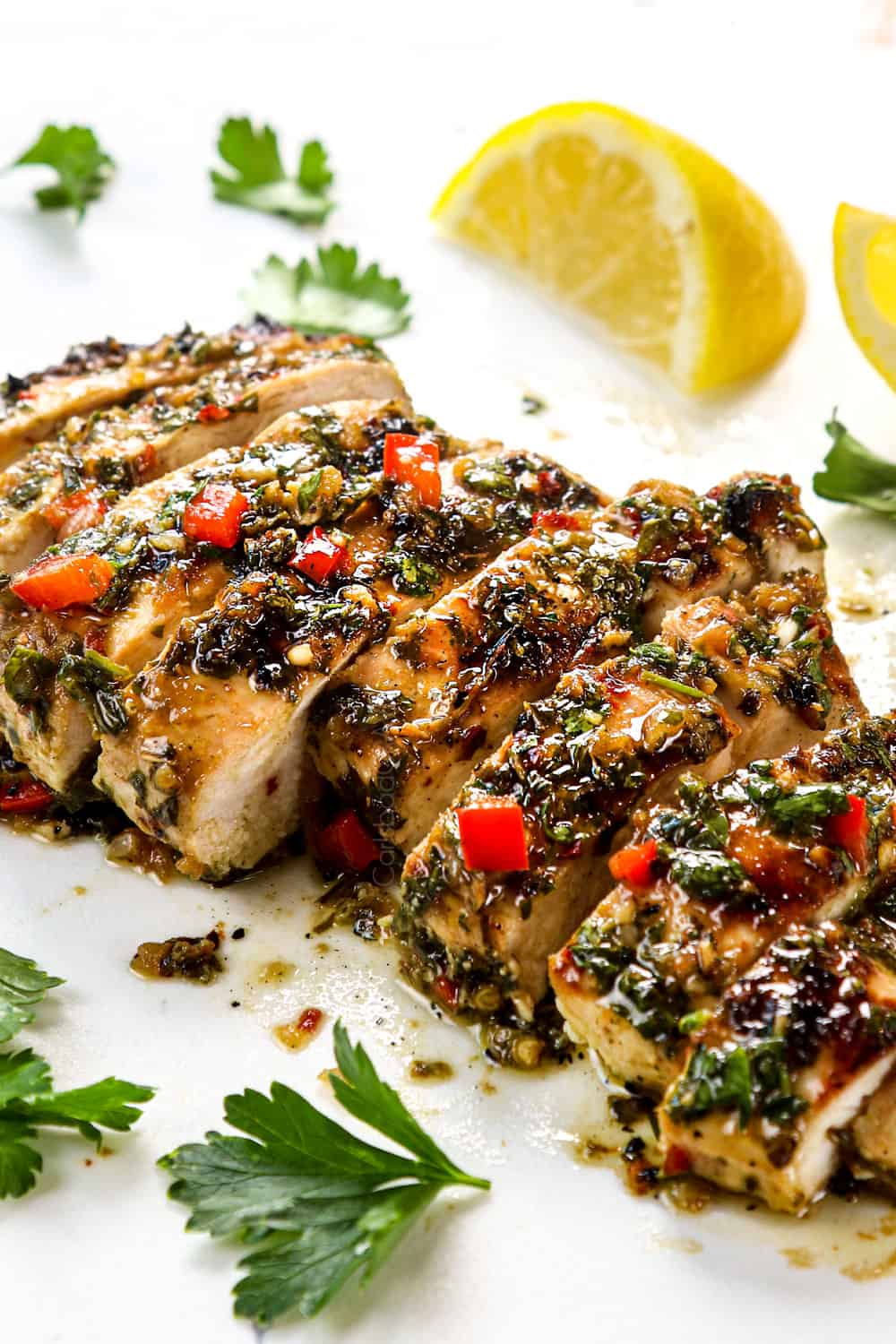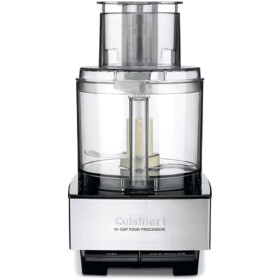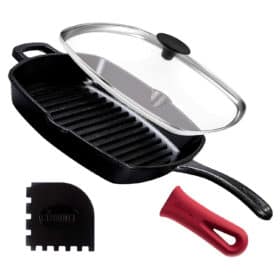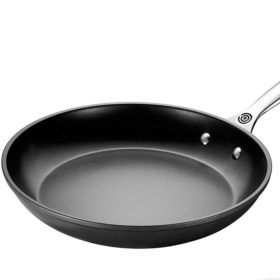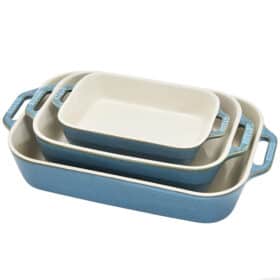We love chicken marinades! They are the easiest way to infuse chicken with flavor and make dinner time a breeze. Some of our most popular chicken marinades include: best grilled chicken marinade, Greek chicken, cilantro chicken, chili lime chicken, Hawaiian chicken ,buffalo chicken and now you can add this chicken chimichurri to the list.
WATCH: How to Make Chimichurri Chicken
CHICKEN Chimichurri INGREDIENTS
The Chimichurri Sauce is the star of this Chimichurri Chicken recipe. It is used both as the marinade and the finishing sauce. The good news is this this bright, flavor packed sauce is incredibly quick and easy to make in your food processor with just few ingredients like parsley, oregano, red-wine vinegar, red chili peppers (or flakes) and olive oil. Let’s take a closer look at what you’ll need to make it (full recipe measurements in the recipe card at the bottom of the post):
HOW TO MAKE CHIMICHURRI Chicken
Chimichurri Chicken is extremely easy to make with an assist from the food processor. However, you are welcome to chop all of the ingredients by hand and combine them in a bowl if you wish.
Step 1: Make Chimichurri
Finely chop aromatics. We want to chop the shallot and garlic first along with the vinegar and lemon juice to make sure the aromatics are finely minced before adding the parsley. Chop herbs. Add parsley, cilantro and oregano. Pulse several times to chop. Pour in the olive oil. Add the olive oil while the processor is running in order to emulsify the olive oil and red wine vinegar. An emulsion is simply a blend of two liquids that don’t normally bind together. The beauty of emulsification is that it creates a cohesive sauce. Don’t overmix or the olive oil can oxidize and become bitter. Reserve some chimichurri. Remove ⅓ cup chimichurri sauce to use as a topping for the cooked chicken.
Step 2: Marinate Chicken
Pound chicken to an even thickness. Place chicken breasts in-between two pieces of plastic wrap and pound to an even thickness using the flat side of a meat mallet, rolling pin or side of a can.
Combine chicken and chimichurri. Transfer chicken to a freezer size bag or large bowl and toss evenly with the remaining chimichurri. Marinate chicken. Marinate chicken at room temperature for 30 minutes if you’re short on time or up to 12 hours in the refrigerator.
HOW TO COOK CHICKEN CHIMICHURRI
This Chimichurri Chicken is so tasty and versatile, you’re going to want to serve it year-round! Here’s a few different cooking methods to meet your year-round needs:
Go all parsley: Swap the cilantro for parsley. Play with green proportions: Add more cilantro instead of the parsley or vice versa. Basil chimichurri: Swap all or some of the parsley or cilantro for basil. Use other greens: Swap in a different green for the cilantro and/or parsley such as fresh dill, mint, kale, chard, arugula mustard greens and more. Customize spice level. In most regions, chimichurri is meant to be spicy but you can customize the heat. The following is for Fresno peppers; if you use a smaller/spicier pepper, you’ll need to use less. If you know you don’t like heat, start with half of a chili pepper. If you know you like some heat, start with one chili pepper. If you know you love heat, start with 2 chili peppers. Add some of the seeds to taste if you would like it spicier. Remember the sauce will have more of a kick when you taste it plain but will mellow when combined with whatever you’re serving it on or with. Use red chili flakes instead of fresh peppers. You may substitute the fresh chilies with ½-1 teaspoon of dried red chili flakes. Start with a little then add more to taste. More or less garlic: If you like more of a garlic forward chimichurri recipe, use 4 garlic cloves. If you like milder garlic, start with 2 cloves. After the chimichurri is mixed and allowed to rest for 15-30 minutes, you can taste and add more finely minced garlic if you prefer. Customize consistency. Add more or less olive oil depending on how thick or thin you prefer your chimichurri. If you would like additional olive oil after the sauce is mixed, stir it in, rather than blend it to avoid bitter over-oxidation. Season to taste. You may prefer a more garlicky sauce, a tangier sauce or spicier sauce, so be prepared to make it your own. Asian chimichurri: I’ve served Asian chimichurri with both Asian steak and Asian salmon and it was phenomenal. Swap the parsley for cilantro, basil and mint, red wine vinegar for rice wine vinegar and oregano for ginger, and add a splash of fish sauce and toasted sesame oil.
Tag @CarlsbadCravings and Use #CarlsbadCravngs Leave a Review, I Always Love Hearing From You!
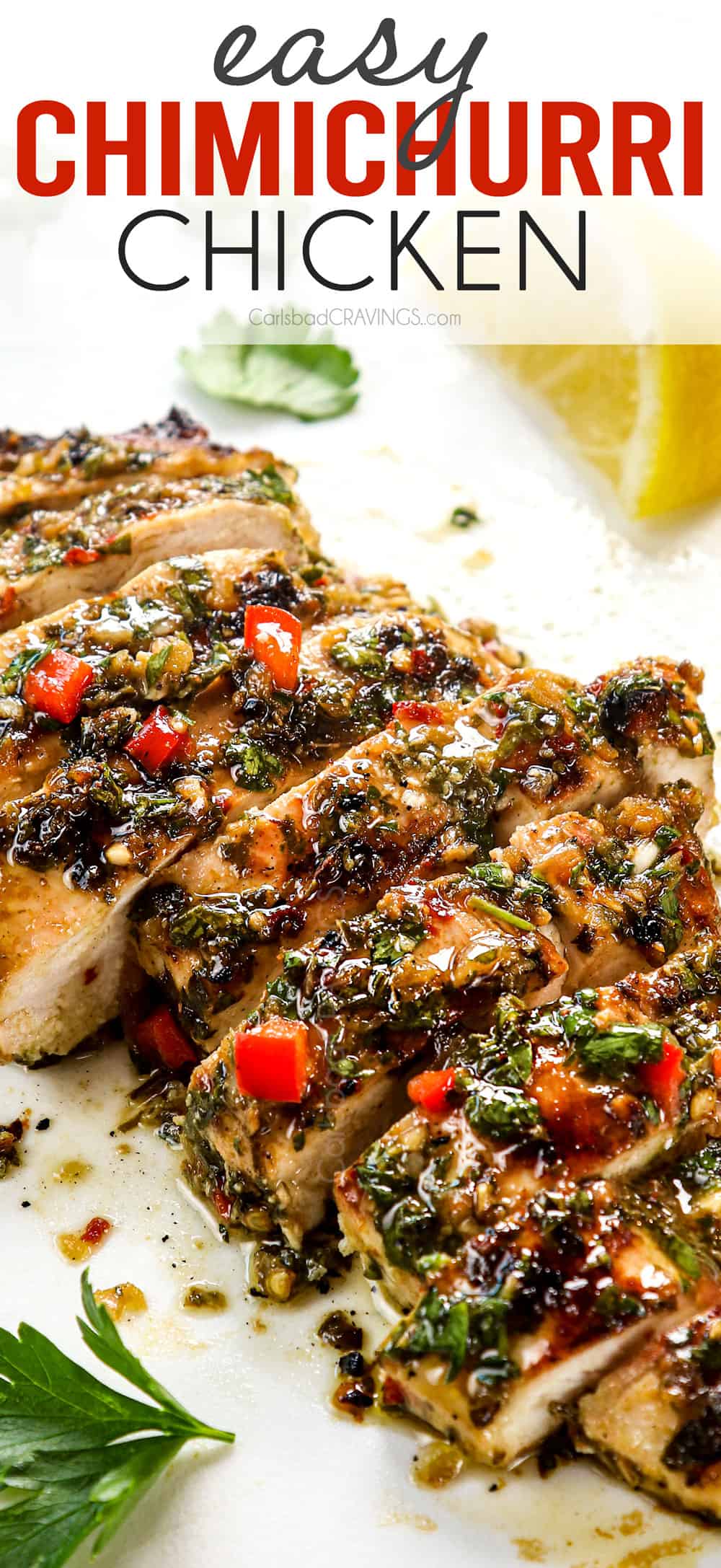


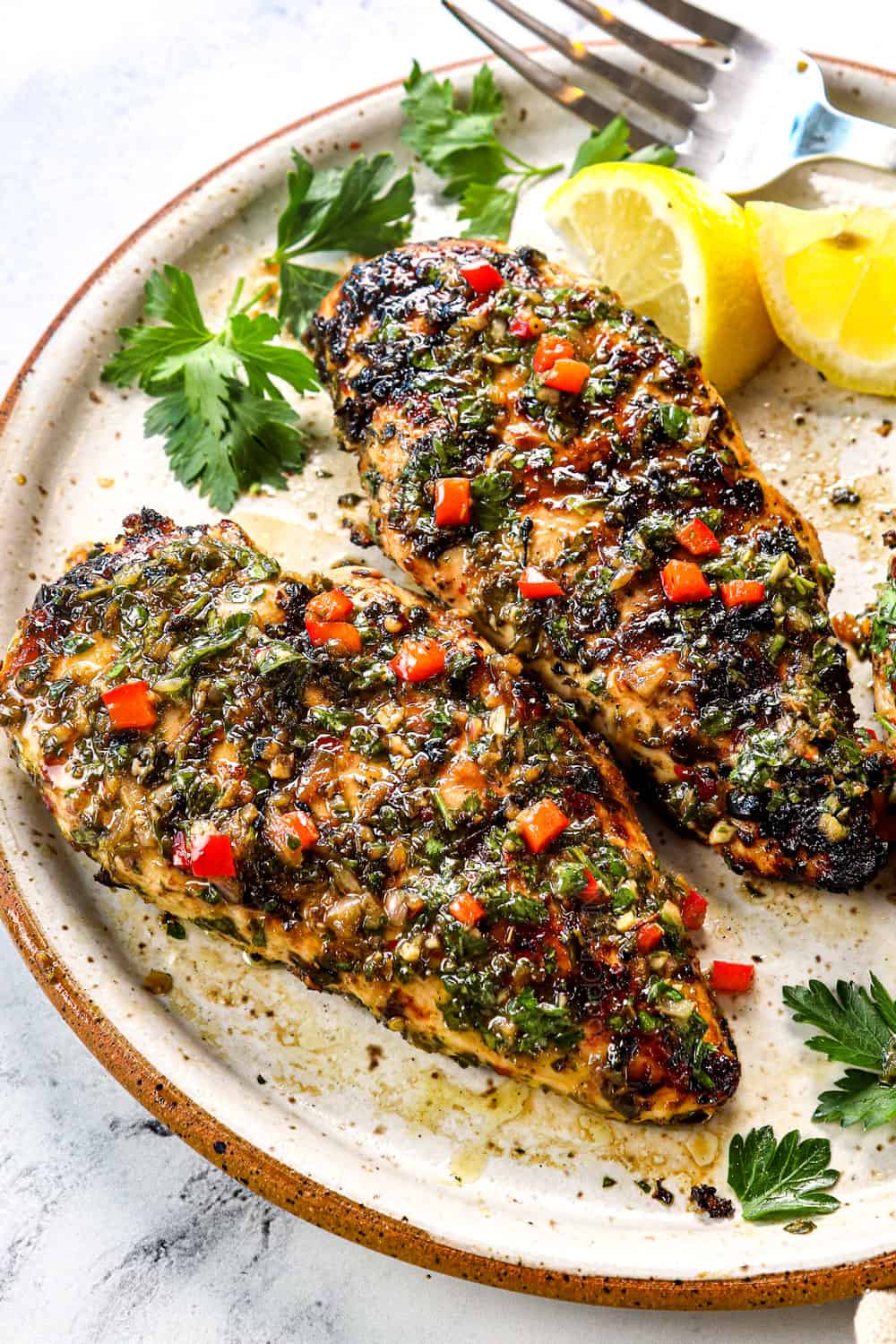

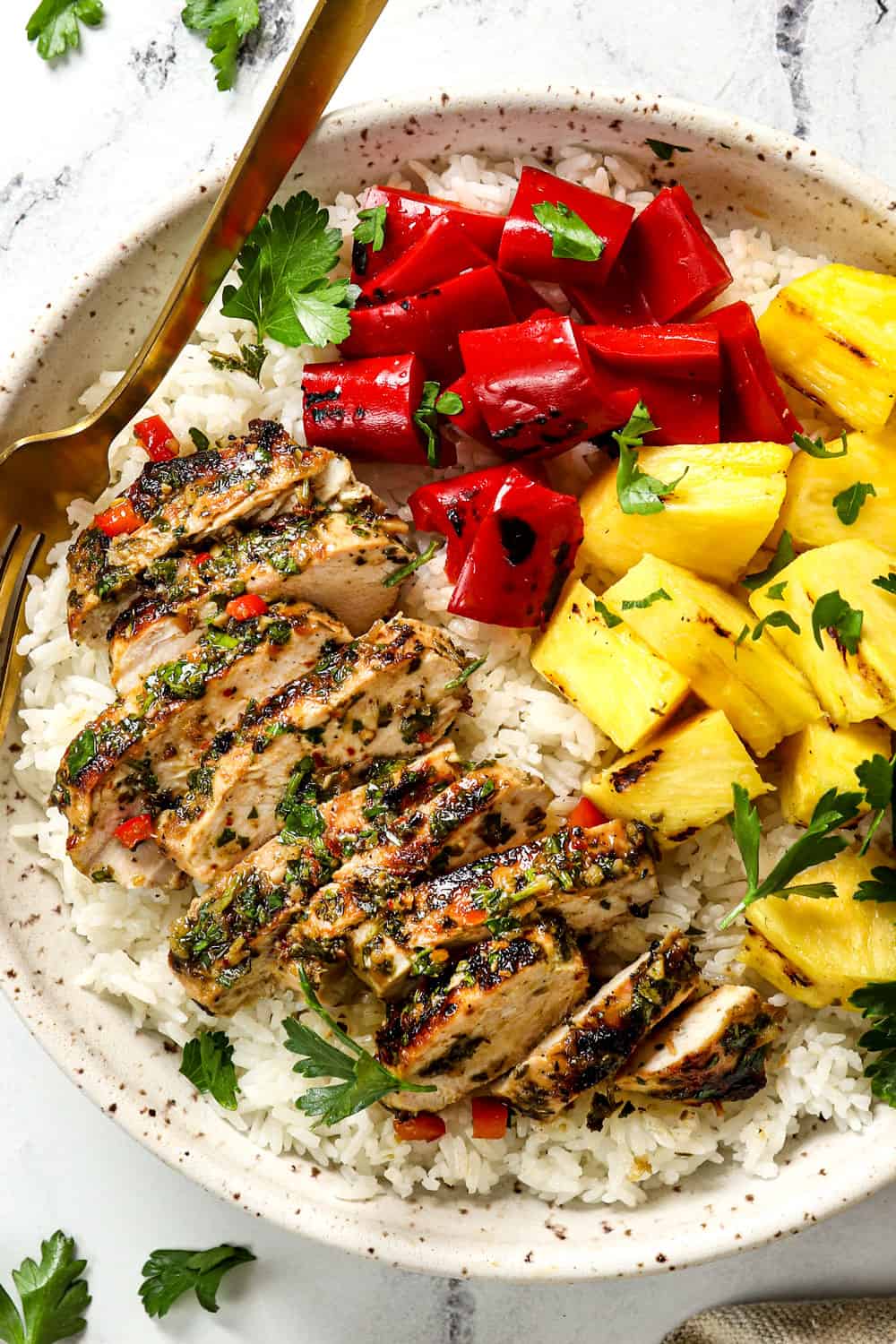

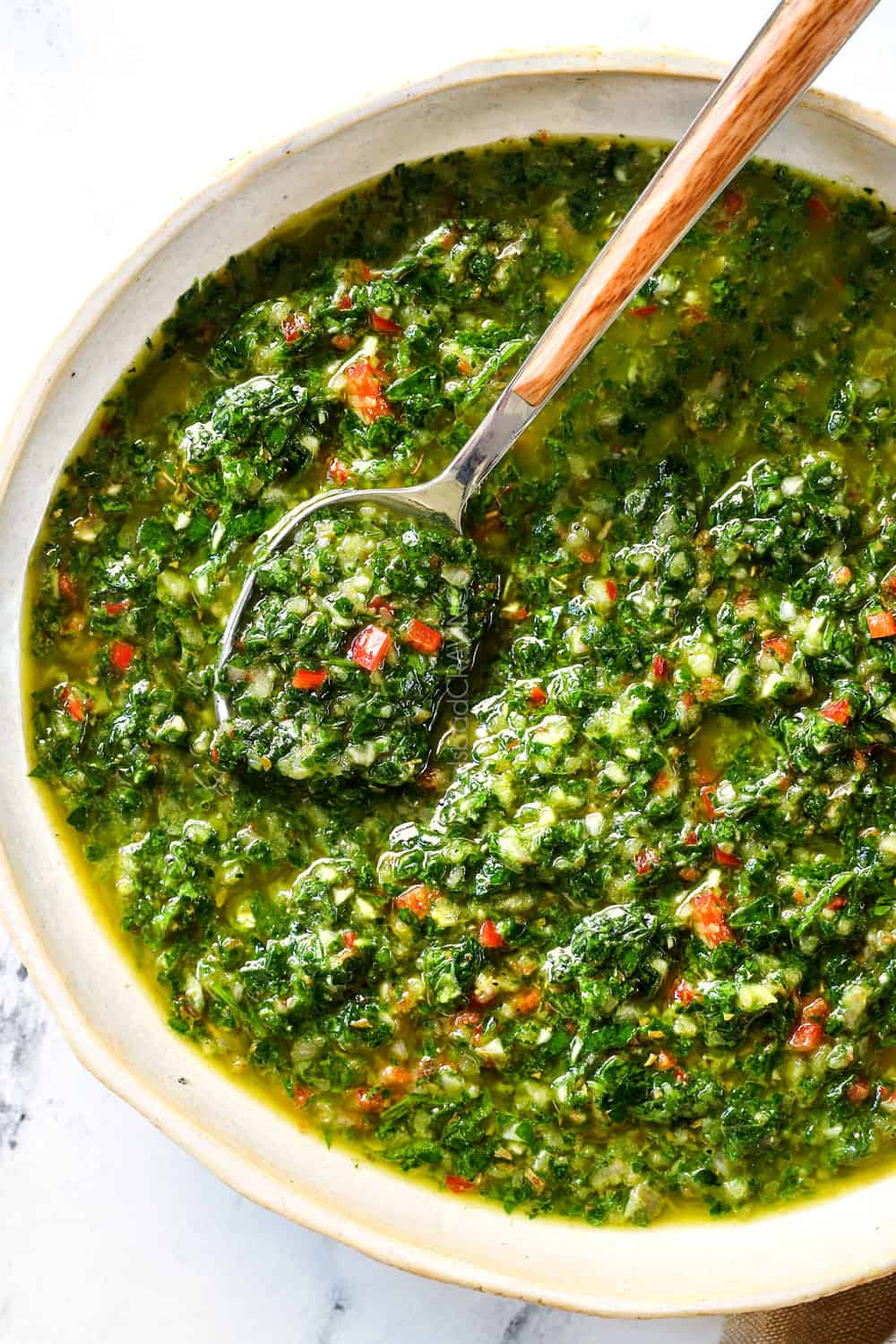
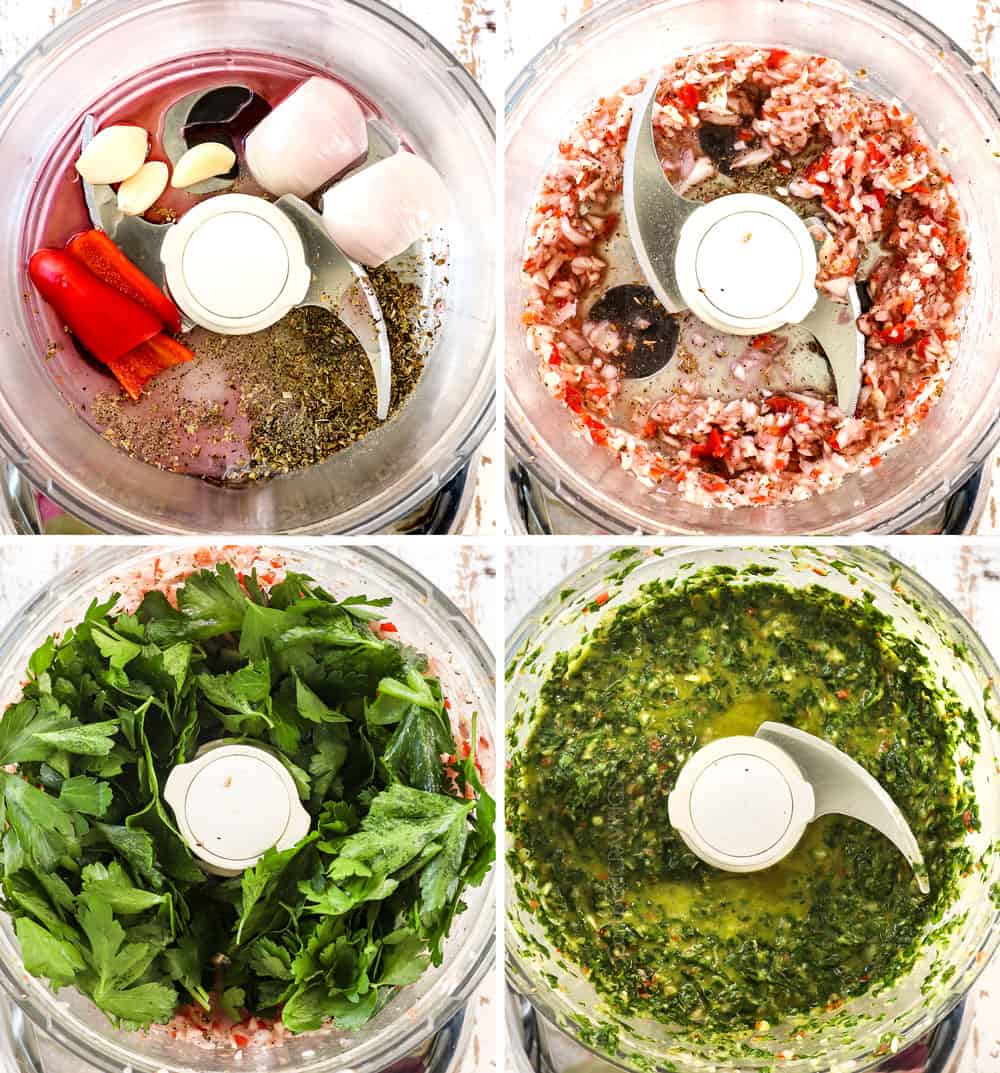

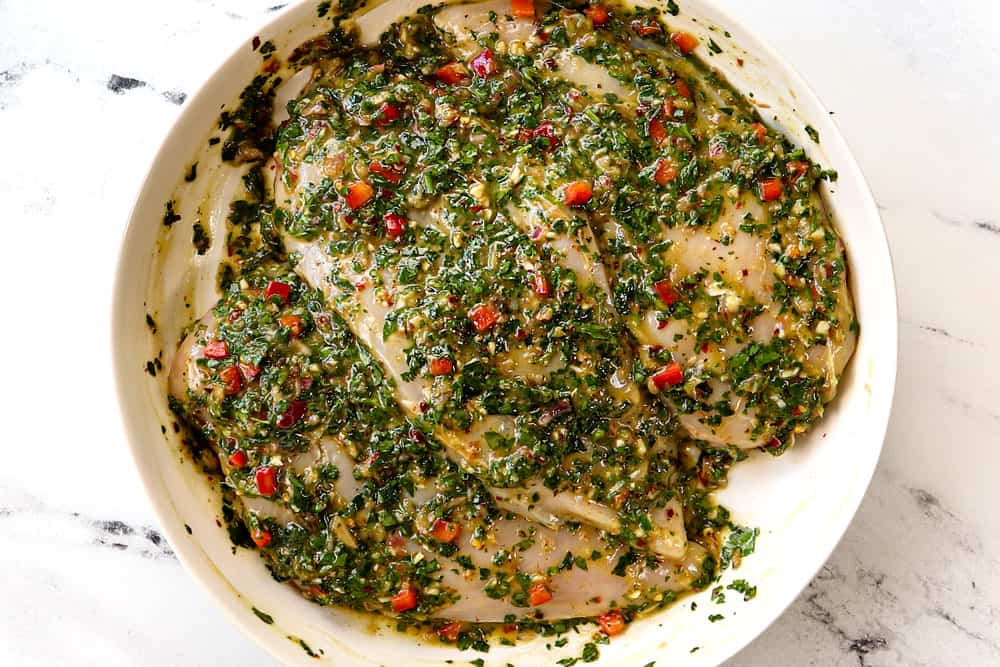


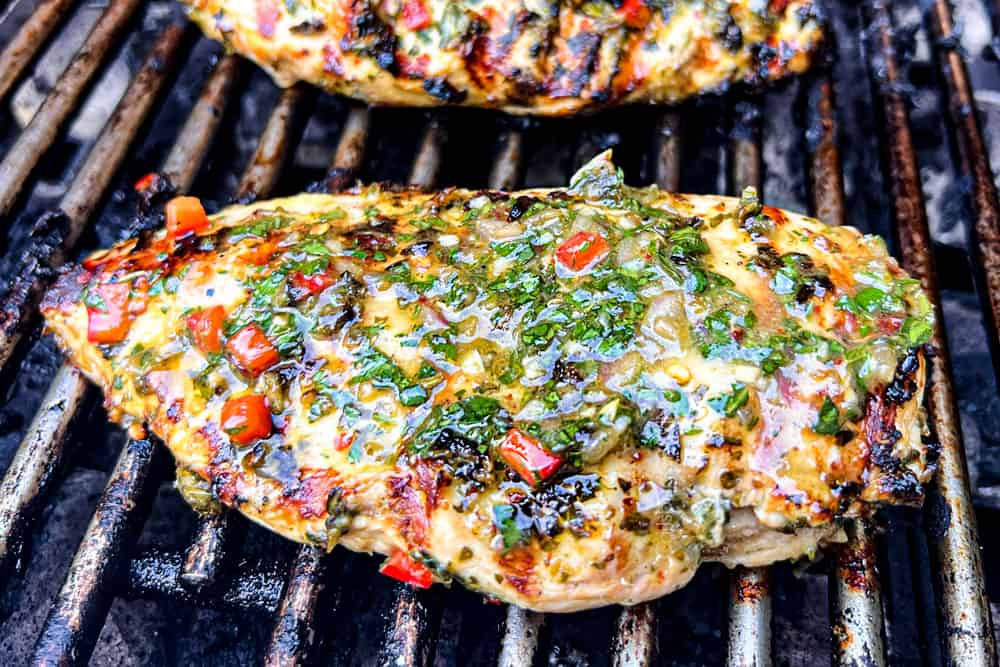
![]()
![]()


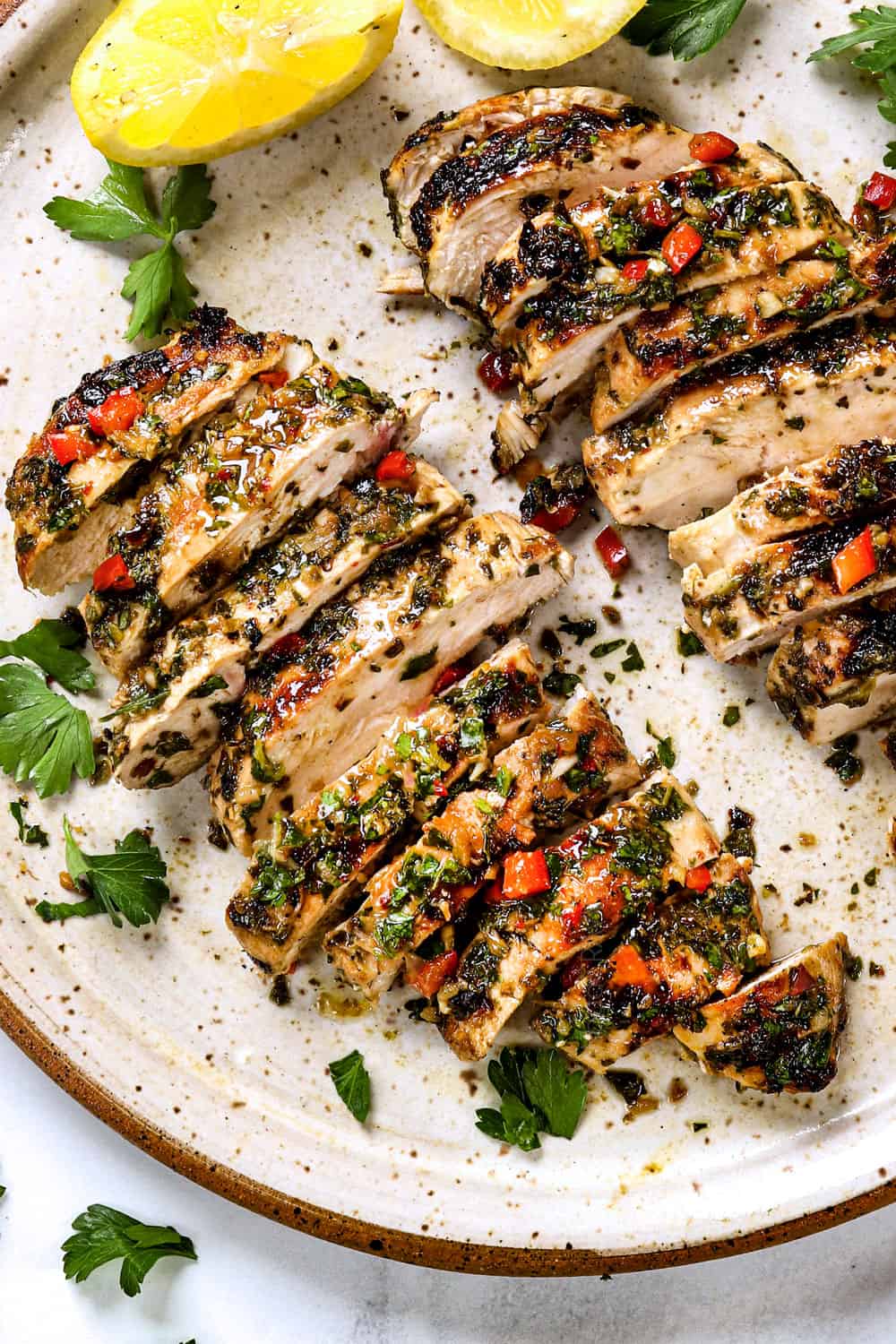



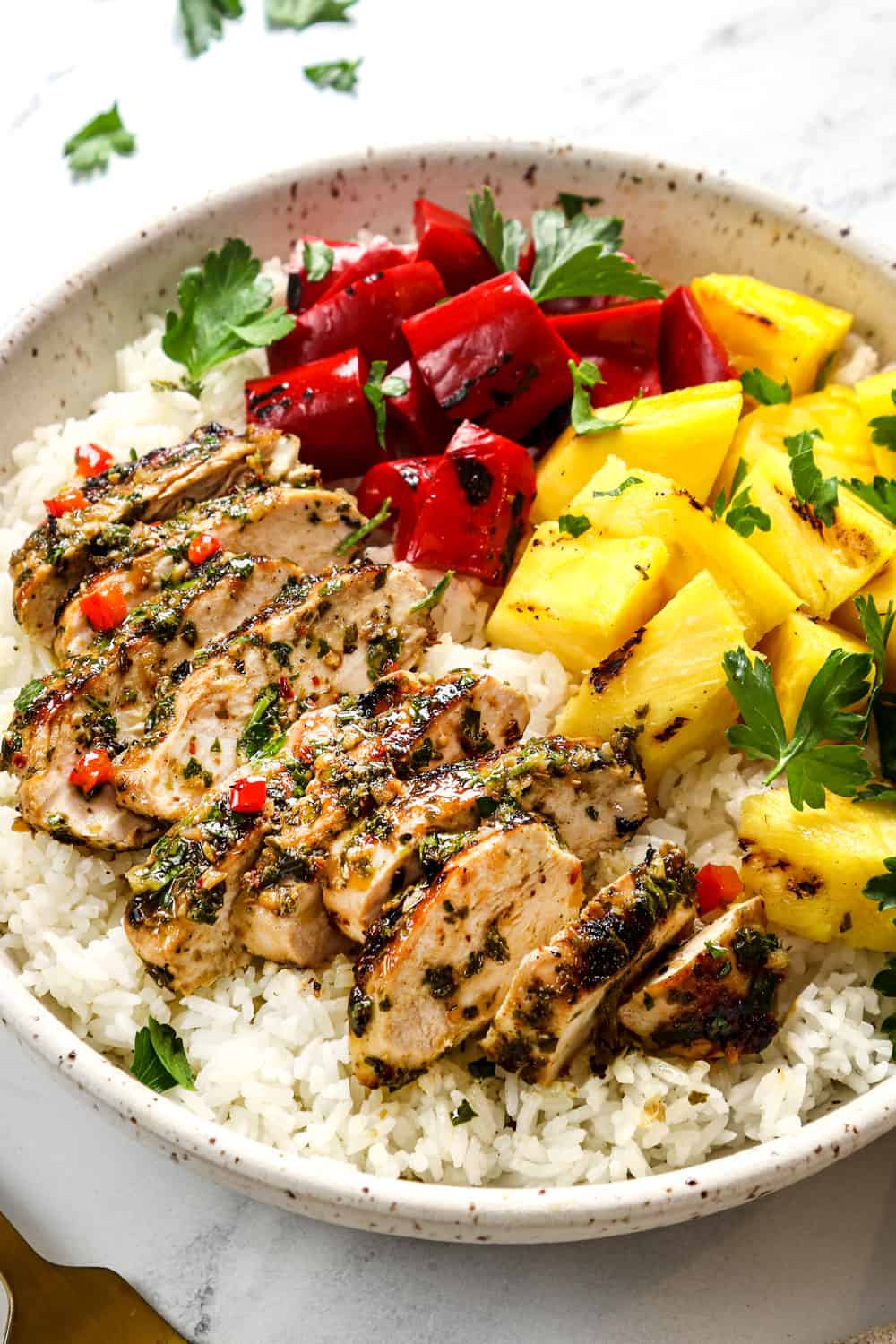





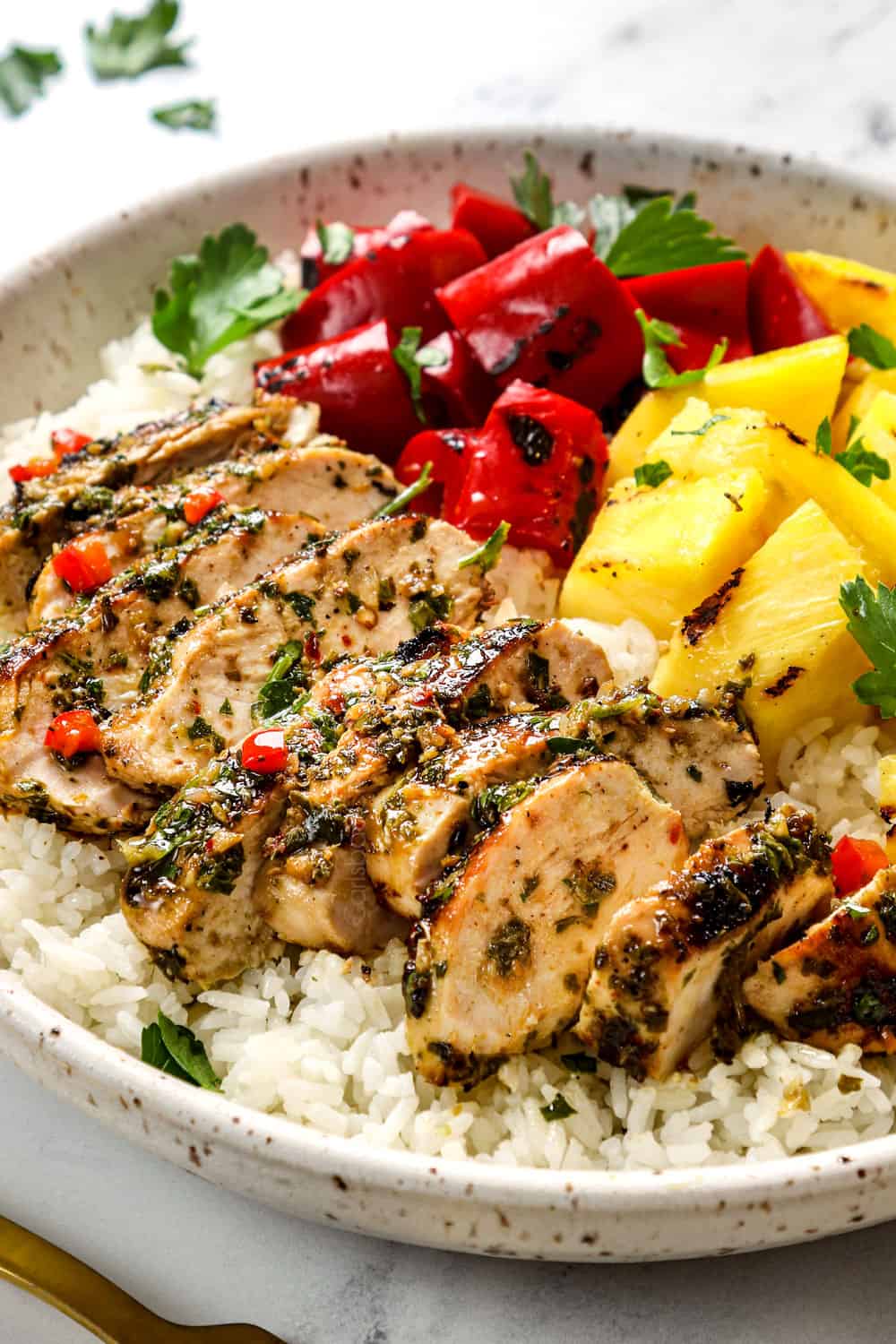
![]()
